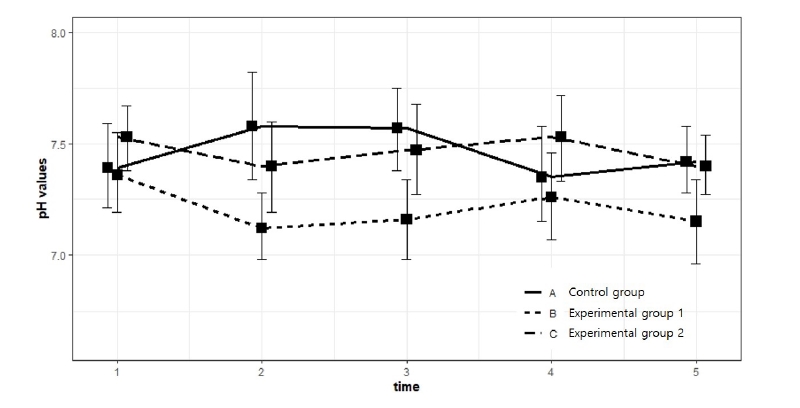Abstract
Objectives: The purpose of this study was to investigate the changes in pH in the oral cavity using the probiotic intake method. Methods: A total of 109 participants were enrolled and randomly assigned to three groups. Participants in the control group did not ingest powdered probiotics, those in experimental group 1 ingested powdered probiotics by dissolving them on the tongue, and those in experimental group 2 dissolved powdered probiotics on the tongue and rinsed with water. pH values were measured 5 times in all. The significance of each group was examined by the Kruskal-Wallis test. The trend over time was expressed as a graph with groupwise means and confidence intervals, considering repeated measurement data. Results: A significant difference was found between the control group and experimental group 1 at two time-points, i.e., immediately after intake and 3 min after ingestion. As a result of the time trend, the pH value of experimental group 2 was smaller than that of experimental group 1, compared to the control group. Conclusions: Studies have shown that taking probiotics with water may help reduce changes in oral pH. Probiotics should be aware of live bacteria and provide consumers with more detailed information on proper dosage and precautions.
Figures & Tables

Fig. 1. The plot of time trend of pH values according to 5 time points (at start, Immediately after taking probiotics, 3 min, 7 min and 20 min) with groupwise means and confidence intervals considering repeated measurement data. Solid line stands for control group (A), dotted line stands for experimental group 1 (B), and longdash stands for experimental group 2 (C).


